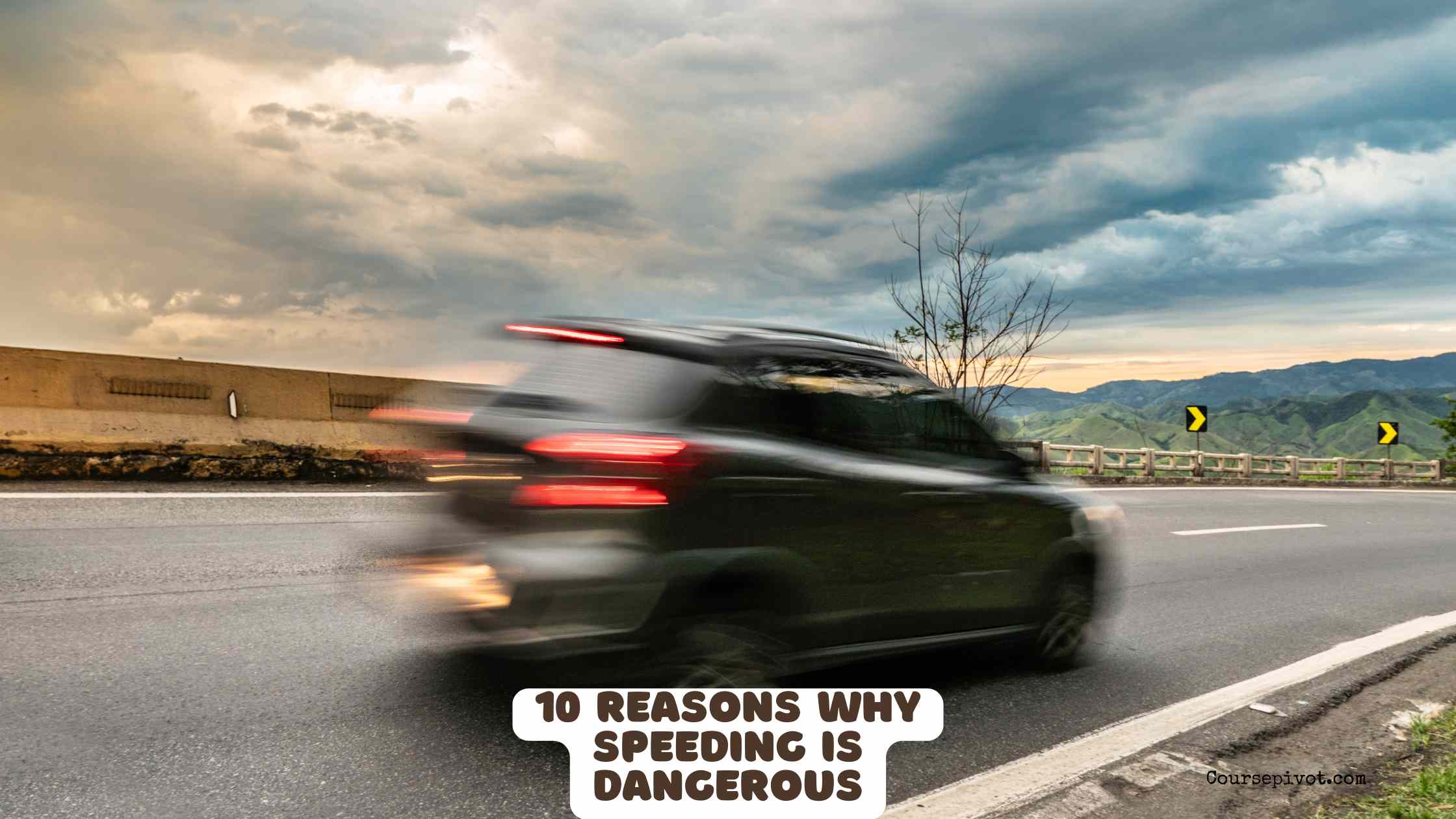
10 Reasons Why Speeding Is Dangerous in the USA
Speeding isn’t just a ticket waiting to happen—it’s a deadly choice that claims thousands of lives each year. In 2023 alone, speeding was a factor in 29% of all traffic fatalities, killing 11,775 people, according to the National Highway Traffic Safety Administration (NHTSA). That’s over 32 lives lost every day on American roads. While frustration, lateness, or thrill-seeking might tempt drivers to push the pedal, the risks far outweigh any “time saved.”
Table of Contents
This blog uncovers 10 reasons why speeding is dangerous in the USA, backed by data and insights to help you stay safe and make smarter choices behind the wheel.
Why Speeding Persists Despite the Risks
Despite widespread awareness, speeding remains a leading cause of crashes, contributing to 10,541 fatal incidents in 2023. Common triggers include traffic jams, running late, or simple disregard for the law. But as states ramp up enforcement and education, understanding these dangers can curb the habit. From physics to legal fallout, here’s why exceeding the limit is a high-stakes gamble.
1. Increased Risk of Fatal Crashes
Speeding dramatically raises the odds of a deadly accident. At just 10 mph over the limit, the risk of serious injury doubles. NHTSA data shows speeding was involved in 29% of all U.S. traffic deaths in 2023, a stark reminder that higher speeds turn minor mishaps into tragedies.
2. Longer Stopping Distances
Physics doesn’t lie: Speeding quadruples your stopping distance when doubled. At 40 mph, it takes about 109 feet to stop; at 80 mph, that’s 333 feet—nearly the length of a football field. This leaves no margin for error at intersections or in traffic, making sudden stops impossible.
3. Greater Impact Force in Collisions
Higher speeds mean exponentially more kinetic energy—doubling speed quadruples impact force. The Insurance Institute for Highway Safety (IIHS) reports that every 10 mph over the limit significantly boosts severe injury or death risk, turning survivable crashes into catastrophes.
4. Reduced Vehicle Control
Speeding diminishes your ability to steer or react, especially in curves or wet conditions. At excessive speeds, vehicles become unstable, increasing rollover risks for SUVs and trucks. NHTSA notes that speeding drivers often lose control during evasive maneuvers, leading to head-on collisions.
5. Danger to Vulnerable Road Users
Pedestrians, cyclists, and motorcyclists suffer most from speeding. A pedestrian hit at 30 mph has a 50% survival chance; at 40 mph, it drops to 20%. In 2023, speeding contributed to 45% of fatalities on wet roads, endangering everyone from joggers to bikers.
6. Exacerbation of Aggressive Driving
Speeding often fuels road rage, leading to tailgating, weaving, and abrupt lane changes. NHTSA defines aggressive driving as combinations of offenses like speeding and improper passing, which spike crash risks by 30–50%. It’s a chain reaction that endangers entire highways.
7. Impaired Judgment in Adverse Conditions
Speeding ignores “too fast for conditions,” like rain, fog, or construction zones. In 2023, 45% of speeding-related fatalities occurred on wet roads, per the National Safety Council. Drivers overestimate control in poor weather, leading to hydroplaning or skids.
8. High Economic and Legal Costs
Beyond lives lost, speeding racks up bills: Fines average $150–$300 per ticket, plus higher insurance premiums (up to 20–30% hikes). In states like Georgia, repeat offenders face license suspension and jail time. Medical costs from crashes average $50,000+ per incident.
9. Erosion of Overall Road Safety
When one driver speeds, it normalizes the behavior, creating a culture of risk. GHSA reports a post-pandemic surge in excessive speeding, narrowing speed differentials but increasing absolute speeds and crash severity. This “trickle-down” danger affects everyone on the road.
10. Disregard for Speed Limit Engineering
Speed limits are scientifically set based on road design, traffic, and crash data. Ignoring them undermines safety features like guardrails, which are less effective at high speeds. NHTSA emphasizes that limits protect all users, from cars to semis.
Why Addressing Speeding Saves Lives
These 10 reasons why speeding is dangerous in the USA highlight a public health crisis: 11,775 deaths in 2023, down slightly but still devastating. Enforcement, education, and tech like speed cameras are helping, but personal responsibility is key. Speeding doesn’t just risk your life—it endangers families, communities, and the roads we share.
Practical Tips to Avoid Speeding
- Use cruise control: Set it to the limit on highways to maintain steady speeds.
- Plan ahead: Leave early to avoid rushing—better late than never.
- Monitor apps: Waze or Google Maps alert speed traps and hazards.
- Practice mindfulness: Breathe deeply if frustration builds; safe arrival trumps speed.
- Educate passengers: Make it a group rule—no speeding for anyone’s sake.
Common Myths to Avoid
Don’t believe “everyone speeds, so it’s fine”—it’s still illegal and deadly. Avoid thinking “higher speeds save time”—the average savings is just minutes, not worth the risk. Don’t ignore wet roads or curves; conditions demand caution, not bravado.
Tailoring to Your Driving
Urban commuters should watch for pedestrians and traffic surges. Highway drivers, focus on stopping distances and fatigue. Parents with kids? Prioritize control over haste. Adjust habits to your route and vehicle for safer miles.
Key Takeaways
Speeding’s 10 dangers in the USA—from fatal crashes and longer stops to economic hits and eroded safety—claim over 11,000 lives yearly. It’s not just thrill; it’s a choice with catastrophic consequences. By planning ahead, using tech, and committing to limits, you protect yourself and others. Roads are for arriving, not racing—what’s your pledge to drive safer today?
Cite this article
You can copy and paste your preferred citation format below.
Martin, L. & Arquette, E.. (2025, October 1). 10 Reasons Why Speeding Is Dangerous in the USA. Coursepivot.com. https://coursepivot.com/blog/10-reasons-why-speeding-is-dangerous-in-the-usa/



